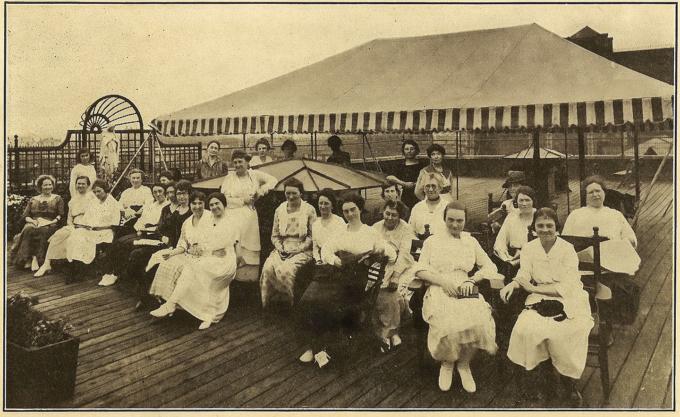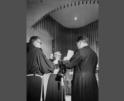
Culture
This new institution was to serve girls and young women in a similar capacity, providing those who worked with an affordable, safe. And clean place to live that would not otherwise be within their limited means.

Lester
On April 23, 1892, The Working Girls Home was incorporated "for the purpose of providing a temporary Home for homeless working girls while out of employment; and also for working girls whose employment, when at work, is not sufficiently remunerative to procure for them suitable homes."
This mission may sound familiar, as it reflected that of the House of the Angel Guardian and Working Boys' Home, both of which had already been established to help boys and young men in the same situation. This new institution was to serve girls and young women in a similar capacity, providing those who worked with an affordable, safe, and clean place to live that would not otherwise be within their limited means. Additionally, it was to provide the same for those who may be sick or temporarily unemployed and so devoid of any income for a time.
Archbishop John Williams of Boston is recognized for being the great promoter of this charitable institution -- The Pilot called him "its first, and . . . Most constant and serviceable friend" -- and at his request, the Grey Nuns of Montreal opened its earliest iteration in the spring of 1888, occupying two houses at 34 and 36 Dover Street (today East Berkley Street).
From the outset, the demand far exceeded the number of rooms available at the Dover Street property, and it was always at full capacity. An article in The Pilot dating to April 11, 1891, states that since January 1890, it had given shelter to 283 women.
In that same issue, it was reported that Archbishop Williams had purchased a property at the corner of Harrison Avenue and Union Park Street, across from his own residence behind the Cathedral of the Holy Cross, for the purpose of constructing a larger and more suitable building. Ground was broken on Sept. 3 of the same year and a new four-story brick structure was dedicated on Dec. 4, 1893.
The building, at a cost of $125,000, contained over 100 rooms and could accommodate 200 residents. Amenities included a gymnasium, separate refectories for the residents and the Grey Nuns, a sewing room, eight parlors, a community hall, chapel, steam heat and electric lights. Around this time, a Working Girls' Friend Society was formed by local Catholic laywomen to raise public interest in the building and the sisters' work, and their efforts finding new contributors and collecting membership fees helped pay for the building.
So great was the interest that an estimated 10,000 people visited the "housewarming" reception on Thanksgiving Day, 1893, just before it was formally dedicated. Crowds filled the home from morning until 10 p.m., where residents welcomed them, served light refreshments, and formed several choruses that made up part of the evening's entertainment.
Within a year of opening, the home added an employment department, and in 1899, an entirely new branch opened at the nearby St. Joseph's Home that encompassed numbers 41, 43, and 45 East Brookline Street. St. Joseph's Home had been established in May 1866 for roughly the same purpose but had closed upon the death of its foundress in May 1897. The building was renovated and blessed on Oct. 30, 1899. It would serve as the residence for the unemployed and newly arrived immigrants without friends or relatives, while the main building would continue to be available to residents who could afford the modest rates.
The home continued in this configuration until the Union Park Street property was renovated and enlarged from 1914 to 1915. When completed the following year, it was renamed St. Helena's House, and the increase in size meant the St. Joseph Home was no longer needed. It was given to the Sisters of St. Joseph, who retained its name but operated it as a home for aged women. It would later move to Dorchester in 1926, and they would also relieve the Grey Nuns and take charge of St. Helena's House in 1938.
Most recently, in 1986, St. Helena's House was renovated and converted to affordable housing for seniors managed by the archdiocese's Planning Office of Urban Affairs.
- Thomas Lester is the archivist of the Archdiocese of Boston.
Recent articles in the Culture & Events section
-
Scripture Reflection for Nov. 24, 2024, Solemnity of Our Lord Jesus Christ, King of the UniverseDeacon Greg Kandra
-
Seeds of graceMolly M. Wade
-
The dedication of St. Francis Chapel in the Prudential CenterThomas Lester
-
Honeybees are taking over for canariesDeacon Timothy Donohue
-
Why we celebrate ThanksgivingRussell Shaw


















